
What is RSI?
RSI (Relative Strength Index) is an indicator used in technical analysis.
This valuable tool is applied in trading: stocks, forex, or even cryptocurrencies. With this indicator, you will know a bullish or bearish signal.
The indicator was developed by mechanical engineer J. Welles Wilder in 1978.
Calculating RSI
RSI = 100 – [100 / ( 1 + (Average Change in Price Up / Change in Average Price Down) ) ]
RSI formula
From this formula, we can see that the indicator shows the correlation between buyers and sellers. The RSI is offered from 0 to 100, and the balance will be 50.
In addition, you also know the overbought zone if the index goes above 70 (buyers dominate) and oversold if the index is below 30 (sells dominate).
This means that when the RSI crosses 70, the price will likely turn around and fall. When the RSI is below 30, it shows that the selling pressure has decreased, and it is likely that the price will increase again.
How to use RSI
The most traditional and basic way to use RSI is to consider selling when the index is above 70 and buying when the index is below 30.
But this is usually not very efficient. Because if it’s that easy, how can anyone swing the top right?
Another simple way is to use the 50 level. In an uptrend market (bull market), RSI will fluctuate between 40-90 with a 40-50 area as support. In a bear market, the RSI will range from 10-60 with the 50-60 area as resistance.
There are also many ways to use this indicator besides the ones I mentioned above. To know, let’s learn more with BTAGuru!

RSI Regular Divergences
There are also 2 divided into 2 types: positive divergences (Bullish Divergences) and negative divergences (Bearish Divergences).
Bullish Divergences
A bullish divergence is created when the RSI bottom makes a higher low and the price makes a lower low.
It shows bullish momentum and signals you to buy or open a long position.
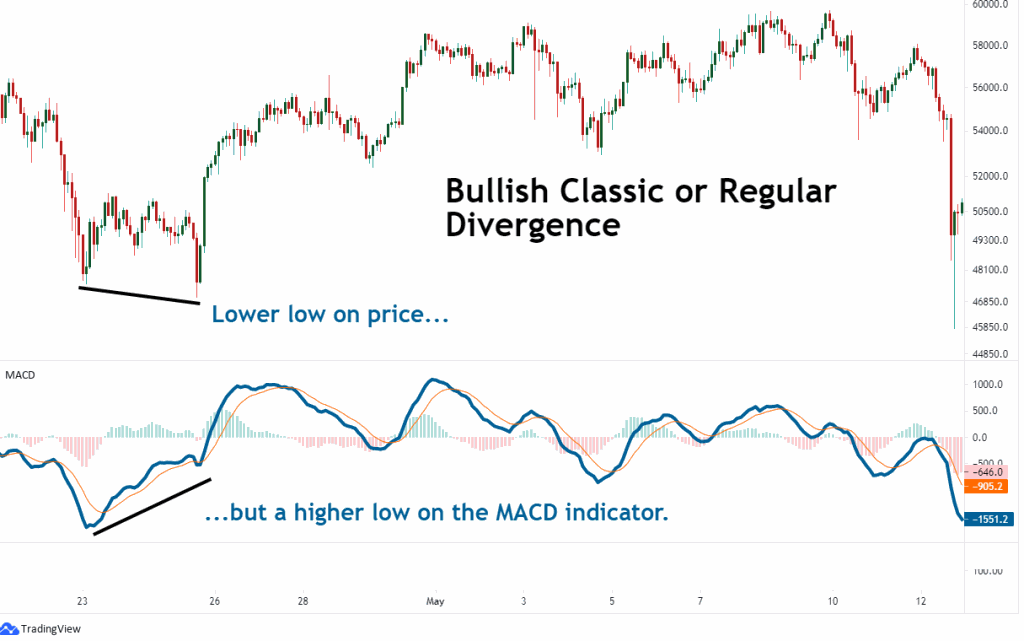
Bearish Divergence
A bearish divergence is created when the RSI bottom makes a lower high, and the price makes a higher high.
It could show a bearish momentum, so you might consider selling or opening a short position.
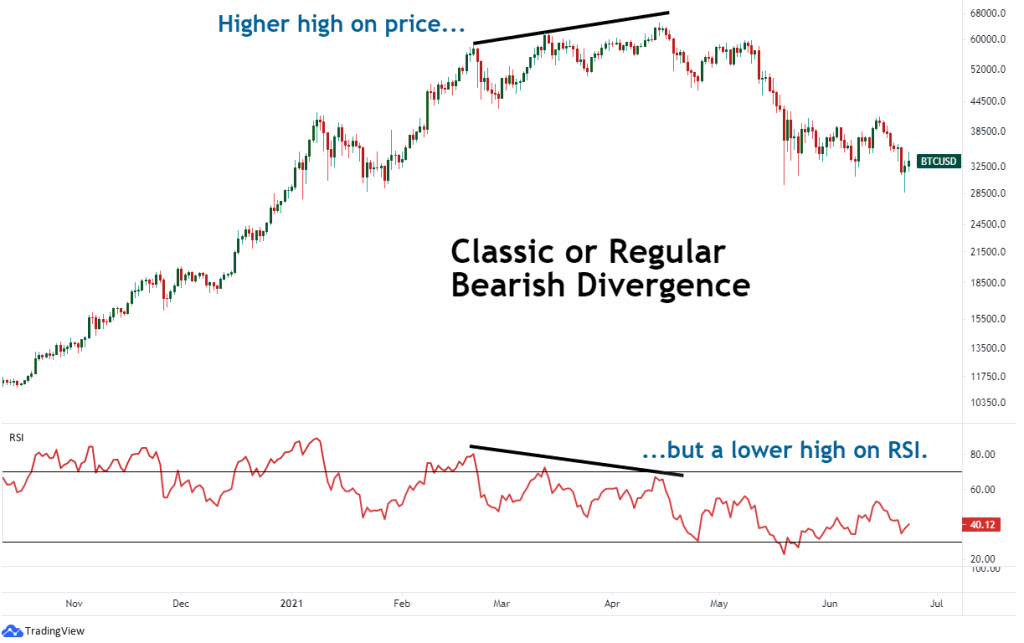
RSI Hidden Divergences
At this point, I have talked about the usual divergence. As you have seen, the result is usually a reversal from bearish to bullish or from bullish to bearish.
But here, I will tell everyone about hidden divergence. The price will continue the uptrend or downtrend.
To identify this type, it will also have 2 types of bullish hidden divergences and Bearish hidden divergences.
Hidden bullish divergence
A bullish closed divergence is created when the RSI makes a lower low, and the price makes a higher low.
When you recognize this signal, you will know the price will continue the uptrend.
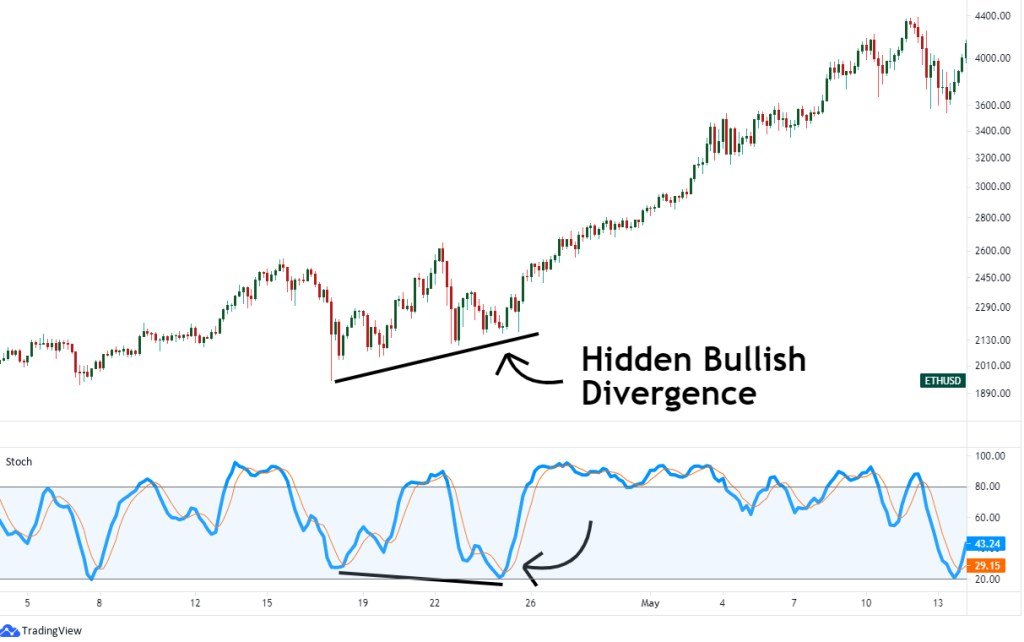
Hidden bearish divergence
A closed bearish divergence is formed when the RSI makes a higher high, and the price makes a lower high.
This is the indicator’s signal that the price will continue its downtrend.
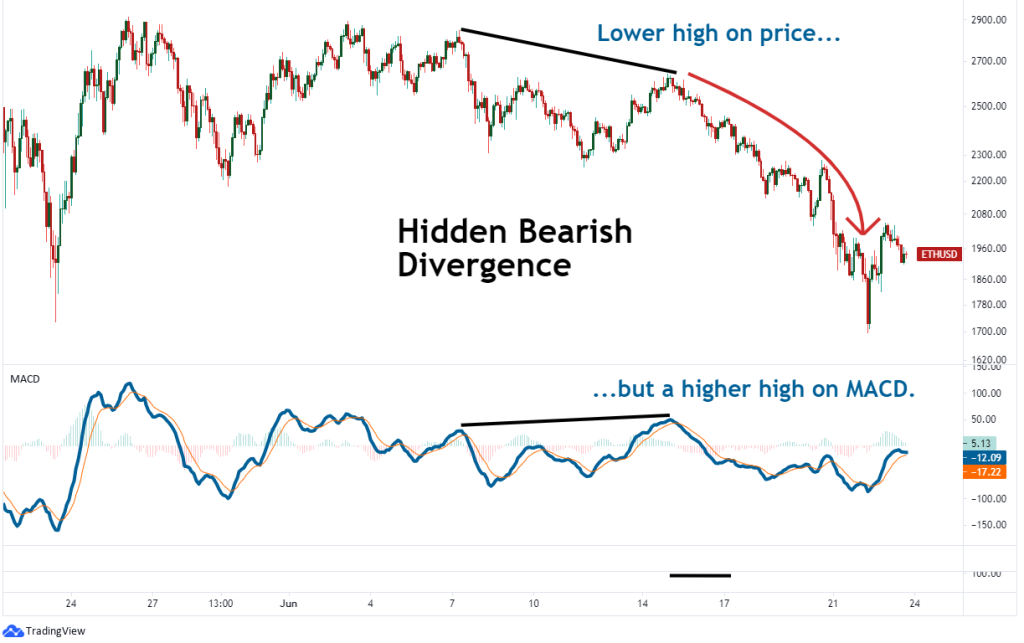
Draw a trend line for the RSI.
We often draw trendlines for the price, right? But now that we know about the Relative Strength Index indicator, we can also draw a trendline.
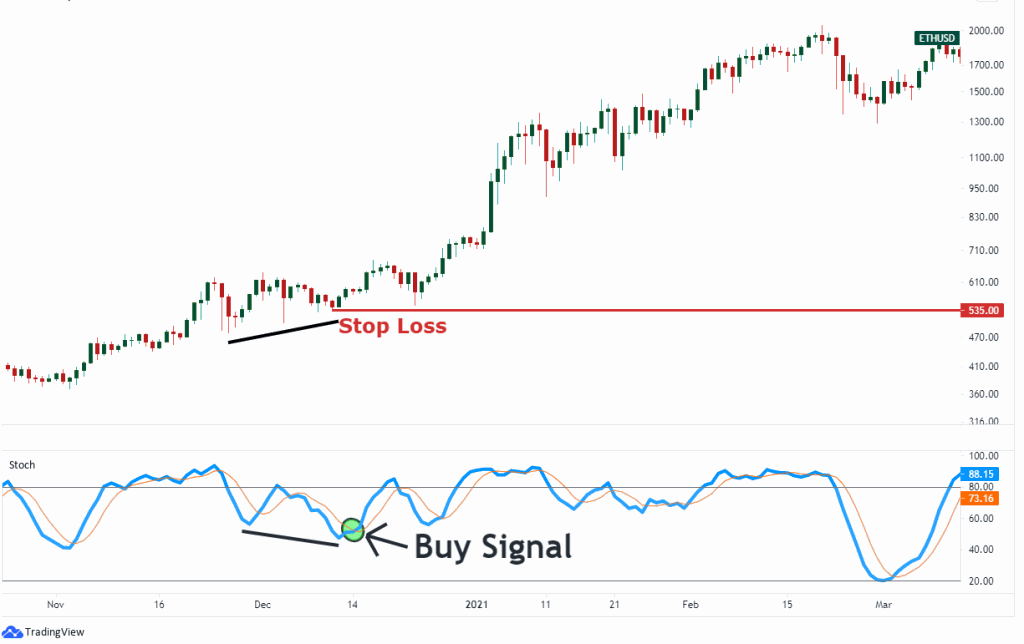
Put the patterns in the RSI.
The models are often applied to prices such as 2 tops (bottom), wedge, cup, handle, etc. You can also use the RSI indicator.
Instructions for setting up the RSI indicator on Tradingview
Tradingview is a valuable tool to help you do technical analysis easily. The pictures I drew are all on Tradingview now.
Step 1: Create a Tradingview account and choose a trading pair
If you do not know how to create it, refer to this Tradingview article.
Step 2: Choose the type of asset you want to trade
You choose the type of asset you buy and trade by entering its name or code in the Search Ticker box at the top. Here I choose Bitcoin to trade.
Once selected, click on the Full Featured chart button to be able to use its functions.
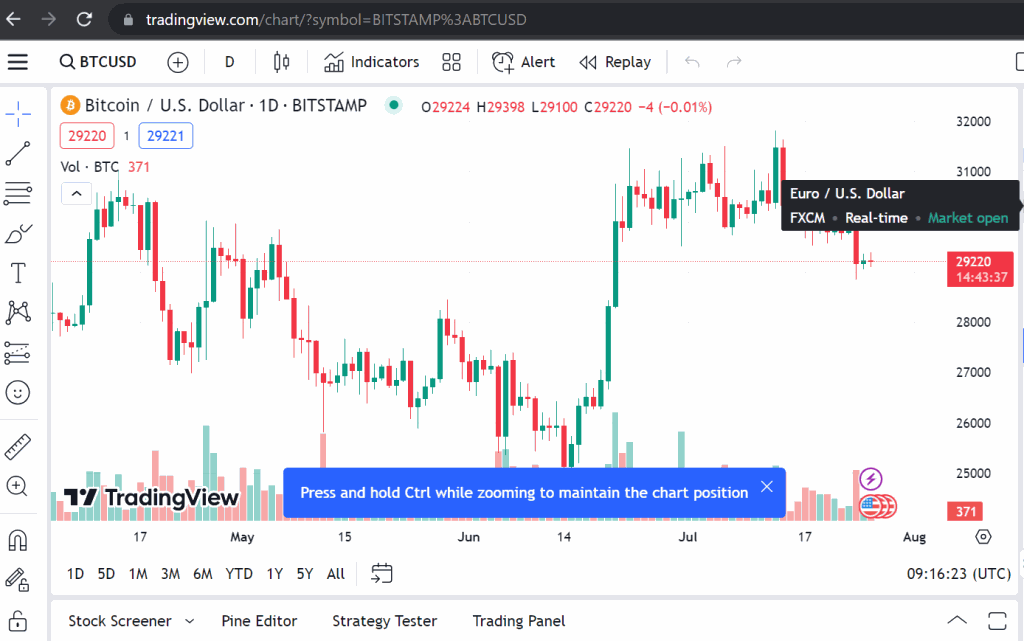
Step 3:
You choose Indicators or press the “/ “button. Next, search for RSI and then find the Relative Strength Index. Just click on it, and you’re done.
To draw like the pictures I have shown above, use the toolbar on the left.
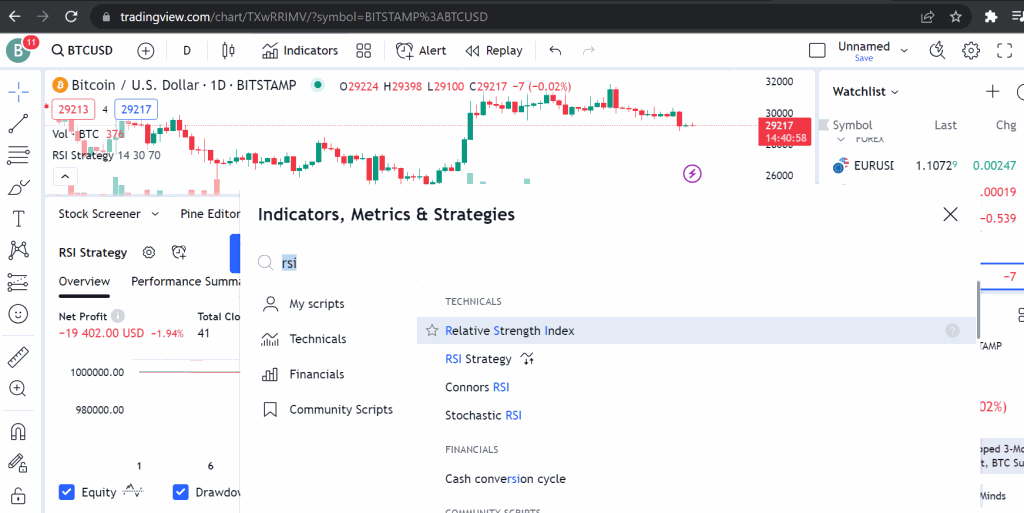
Summary
The indicator is also just an aid in trading because we should not trust it 100%. Mainly since we only use a single indicator.
When the market is trending up or down sharply.
I hope the article helps you better understand the RSI indicator and how to use them! If you have any questions, please comment below.
Don’t forget to like, share, and rate 5 stars to help Blogtienao if you find the article helpful!
Wishes everyone success!


